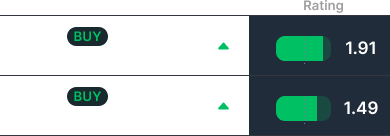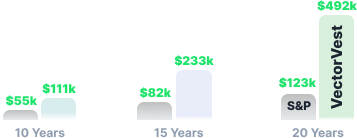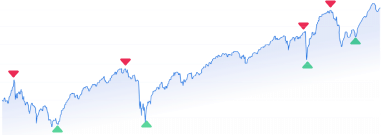If you are looking to start buying options contracts and incorporating this strategy into your existing investment portfolio, it’s important that you fully grasp everything that goes into exercising options contracts.
So, what does it mean to exercise stock options? We’re going to explain today. This short guide will cover everything you need to know about exercising your stock options. In summary, though, exercising your stock options simply means you’re cashing in on the contract you purchased. You make the decision to either buy or sell the stock in question. Typically, this is only done when your contract is considered to be in the money.
We’ll cover all this and more in greater detail below so you have a clear idea of what it means to exercise stock options. First, let’s provide a brief introduction to stock options for those who are new to this strategy.
Featured Courses:
First – A Brief Introduction to Stock Options
We have a complete guide on how do stock options work – which is worth a read if you’re just now learning about this style of investing. However, these are simply investment vehicles you can buy and sell on the stock market.
They’re considered contracts – in which you have the right, but not the obligation, to buy or sell a stock at a predetermined price (strike price), before a predetermined date (exercise date). The idea behind stock options is that you are making an educated guess on how you expect a stock’s price will trend in the future.
For example, if you expect a stock’s price to rise above what it sits at today, you’d purchase a call option – giving you the right (but not the obligation) to buy shares of stock at a discount in the future. On the other hand, if you suspect a stock is overvalued and will drop in value in the future, you’d buy a put option – giving you the right (but not the obligation) to sell the stock at a premium in the future. Our guide on buying stock options has more information on the actual techniques behind choosing stock options.
You can use different tactics to uncover/assess opportunities for options trading. This can be as simple as stock sentiment on a given stock, technical stock analysis through technical indicators, or personal knowledge of a segment/business.
We’ll provide a few tips to help you pick favorable stock options and win more trades later on. For now, let’s get to the main question you came here with today: what does it mean to exercise stock options?
What Does it Mean to Exercise Stock Options?
“Exercising” a stock option simply means you’re leveraging your right to cash in on the contract. In the case of a call options contract, this means you’ve chosen to buy the underlying stock in question at the predetermined price. Or, in the case of a put option contract, exercising your options means you’re choosing to sell the underlying stock in question at the predetermined price.
Either way, your initial theory on how the stock was going to perform before the exercise date has proven true – and you’re cashing in and earning a profit. When you exercise an options contract, it’s typically a win for you. Being able to see this trade through from start to finish means success.
But, is there ever a circumstance in which you wouldn’t want to exercise a stock option?
Why Would You Not Exercise a Stock Option?
Really, the only situation in which you would choose to not exercise a stock option is when you’re contract is out of the money. If you’re holding a call option, by the time your options contract is ready to be exercised, it may have become clear that the stock isn’t going to perform as you had initially predicted – and therefore, exercising the options contract would be an unwise move.
Or, in the case of a put option, if the stock has increased substantially above what was originally forecasted when you purchased the option contract, then it wouldn’t make much sense to exercise a put either. Doing so would mean selling something for less than what its worth.
There is another situation in which you would not exercise a stock option – and that is if you’ve waited too long and the exercise date has passed. At this point, the options contract becomes null and void. You’ll be out the initial premium you paid to purchase the contract in question, which is usually not much. This is part of the benefits of options trading – your downside is fairly limited.
Even still, you want to set yourself up for success with any trading strategy – whether it be trading stock vs stock options. And, we have a few tips to help you do just that…
Tips for Succesful Options Trading
Whether you’re trading stock warrants vs options, value investing vs growth investing, or even scalping vs swing trading, the goal is the same: minimizing risk while maximizing upside potential. Profitable trading with infrequent (and small) losses is attainable – even if you’re a beginner investor. Just follow these tips:
- Take the time to learn before implementing: We know you’re eager to start trading – but we highly recommend you rpactice with paper trading before putting real money into your account. This will allow you to make mistakes without any real risk early on. You’ll gain more confidence through this simulated experience. While you’re at it, explore our blog for more resources on stock options topics – including taxes on options trading, when to exercise stock options, options trading risk management, or swing trading options.
- Remain unemotional: One of the things that separate the most successful traders from those who slowly watch their portfolios dwindle away is the ability to remain unemotional. It’s all too easy to become attached to the outcome of a contract you’ve purchased – holding on hope that it will be in the money soon. But if this is looking less and less likely, it’s worth cutting losses and selling off the contract for whatever you can get. Then, you can move your capital to the next opportunity in question.
- Develop a repeatable strategy: Finding a great options contract and executing it to perfection is great – but can you do it again and again, time after time? If not, you’ll find that over the course of a year, you are relatively unsuccessful. You should have steps in place to uncover opportunities and assess them before purchasing your options contract. The ability to rinse and repeat speeds things up and keeps you from letting emotion influence your decision-making.
- Invest in yourself: Manually finding and vetting opportunities is an outdated approach to any investment strategy – including trading stock options. Instead, invest in yourself and get a stock analyzer software that can do all the heavy lifting for you – while increasing your chances of success! VectorVest literally tells you what to buy, when to buy it, and when to sell it. The system saves you a ton of time and helps you get out of your own way, making silly mistakes or letting emotion affect your full potential. It’s outperformed the S&P 500 by 10x for over two decades – see it in action with a free stock analysis here.
Closing Thoughts on What Does it Mean to Exercise Stock Options
So, what does it mean to exercise stock options?
In summary, exercising a stock option means taking advantage of what was outlined in your initial prediction about how that particular asset or underlying security was going to behave. When this holds true, exercising a stock option is typically a great move – and when it doesn’t hold true, not exercising the option may be what’s best for you.
It’s important to remember that in either case, understanding what your options are as well as what they’re worth can help you make an informed decision. Knowing where you stand with any stock option is essential because making the right decisions can lead to greater financial success! And, the best way to make accurate, emotionless decisions is with the help of VectorVest: the best way to uncover and time your trading strategy in line with the market.
So, get set up with an account today (either our full-desktop version or our mobile stock advisory app) and see what your investment strategy has been missing all this time!
Featured Courses:
What you should do next…
- Get our latest blogs delivered right to your inbox, subscribe to our newsletter.
- The market moves fast! Get our most current evaluation of this stock with our FREE stock analysis tool.
- Looking for stock picks? Not sure if now is the right time to buy/sell? For a limited time, enjoy the full benefits of a 30-day subscription to VectorVest for only [offer_txt] (usually up to [saving_txt]/month) . Get access to our full list of screeners showcasing our top stock picks that tell you exactly what to buy, when to buy, and when to sell.











